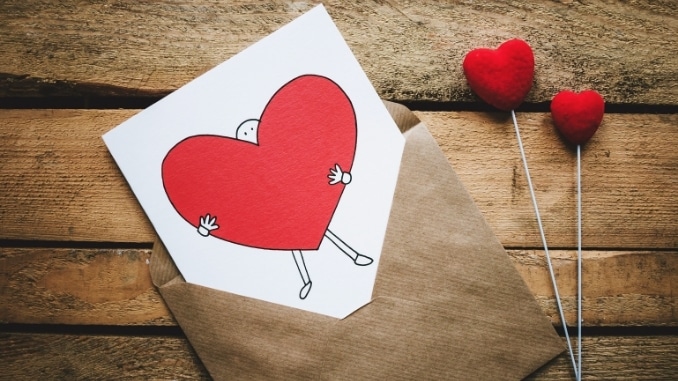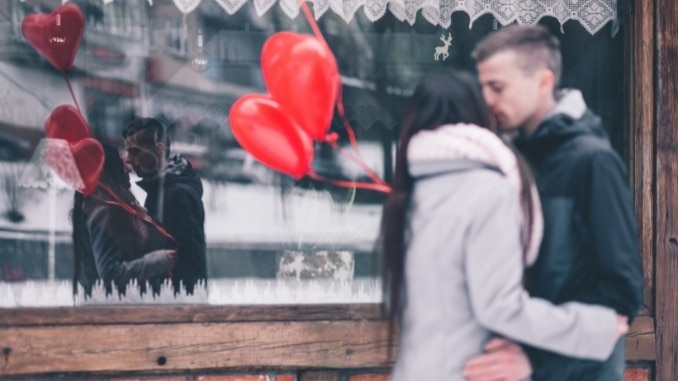
Why do we celebrate Valentine’s Day on February 14? For such a fun, romantic holiday, the history is rather dark — that’s about the time that Roman Emperor Claudius II executed St. Valentine, a Catholic priest serving in Rome. At least that’s the story, according to some legends.
The emperor, you see, had decided that men made better soldiers when they were single rather than married, but St. Valentine continued to perform marriage ceremonies in secret. When he was found out, Claudius ordered that he be put to death.
However, this is only one story about how Valentine’s Day came to be — there are others. No matter the history, today we make the holiday our own and use it to celebrate our connections with all of our loved ones. If you’re looking for new ways to spice up your Valentine’s Day, we’ve got some ideas for you below, along with a few more fun facts about this unique day.
The Uncertain History of Valentine’s Day
Although the story about St. Valentine being executed for secretly marrying couples seems to be the most widely known, there are other stories too that explain the holiday. One suggests that the priest was killed because he was trying to help Christians escape from tortuous Roman prisons. Another says he while he has imprisoned himself, St. Valentine wrote his own valentine greeting to a young girl who visited him during his confinement.
So far, scholars have been unable to pin down any one of these stories as being the absolute truth, but they all point to the spirit of the holiday as being about love and compassion and suggest that St. Valentine himself was a heroic, sympathetic and potentially romantic figure. However, even that isn’t so certain.
Ancient sources reveal that there may have been more than one St. Valentine who died around the middle of February during the reign of Emperor Claudius (269-270 A.D.). One was said to have died in Africa, along with 24 soldiers, but not much more is known about him.
Another (Valentine of Rome) was said to have converted a Roman aristocrat by the name of Asterius to Christianity by healing his daughter of blindness. When the Emperor heard the story, he ordered the priest to be executed. A third (Valentine of Terni) was a bishop of Terni in Umbria, Italy, and got into a similar fix when he converted a man and healed his son, after which he was beheaded. None of these stories points to St. Valentine’s as being particularly romantic.
There is also debate about the date itself — February 14. While one story says that was the day St. Valentine was executed, we also know that the Pagan holiday of “Lupercalia” was celebrated around the same time, on February 15.
The Lupercalia celebration was wildly popular in ancient Roman history as it was essentially a big party. It began with the sacrifice of goats and a dog, and then two of the Luperci — pagan priests of the god Lupercus — were touched with blood from the sacrifices, then cleaned with wool dipped in milk. Once this part of the ritual was complete, the celebration began.
The Luperci cut strips of hiding from the skins of the sacrificial animals and ran around, striking any woman they could find as the idea was that a blow from the strips made a woman fertile. Because the women believed the ritual would help them bear healthy babies, they were said to have lined up for the men to strike them.
The Romans approved of this holiday for centuries, long after Constantine legalized Christianity in the Roman Empire, but some scholars believe that as the new religion grew, the church leaders may have decided to turn Lupercalia into their own holiday. Perhaps to convert the masses better, the church may have dedicated the date of Lupercalia to St. Valentine. Either way, by the end of the fifth century, Lupercalia was outlawed, and Pope Gelasius declared February 14 as St. Valentine’s Day.
Whatever the truth may have been, the question becomes: when did our current traditions begin?
The Literary Roots Behind the Romance in Valentine’s Day
The romantic element of Valentine’s Day may have started taking shape because of Geoffrey Chaucer, who wrote “The Canterbury Tales.” He wrote in his “Parlement of Foules,” published in the 1380s, that the February feast of St. Valentinus was a time when birds gathered together to choose their mates.
“For this was seynt Volantynys day,” he wrote. “When every byrd comyth there to chese his make.”
As to what date Chaucer was referring to, there is some debate. The Christian feast day of St. Valentine was already established as occurring on February 14, but some scholars believe Chaucer was referring to a later date since birds are unlikely to mate that early in England.
Some have suggested the author was referring to May 3, which was the day Valentine of Genoa, a bishop who died in AD 307, was commemorated. They point to other lines in Chaucer’s work that support that theory. Regardless, Chaucer’s work was popular, and soon members of the European nobility were sending love notes to their own mates, but on February 14, not May 3.
Other authors also wrote poems about Valentine’s Day, including John Gower, John Clanvowe and Oton de Grandson, but Chaucer is mainly credited with popularizing the notion. The idea caught on as soon the English were making Valentine’s all about romance. Even Shakespeare had his character Ophelia refer to herself as “Hamlet’s Valentine.” Before long, English couples were celebrating the day with poetry written to their beloveds.
Perhaps one of the earliest and most famous stories of romance associated with Valentine’s Day was when Charles, Duke of Orleans, wrote a poem to his wife while imprisoned in the Tower of London. The British Library in London still has that letter.
It looks like Americans started exchanging hand-made valentine greetings in the early 1700s and mid-1800s, the first mass-produced valentines were produced. Today, an estimated one billion Valentine’s Day cards are sent each year.
Fun Facts About Valentine’s Day
In addition to its colorful history, Valentine’s Day is also full of other rituals that are fun to explore:
- We wear red because it’s long been considered the color of passion; in fact, a modern study by psychologists found that men viewed women wearing red or standing in front of a red background as significantly more attractive and desirable than women wearing or standing in front of other colors
- We eat chocolate because the Cadbury chocolate manufacturing business was the first to design special boxes for Valentine’s Day and sell those boxes filled with new, cocoa butter candies; it’s also believed that Cadbury made the first heart-shaped candy box
- We give out roses because red roses have long symbolized romance, even back in the Victorian era
- We call people “Valentines” because of the legend that said St. Valentine wrote a letter to a young woman while he was in prison and signed it, “From your Valentine.”
- We see cupid everywhere because he was considered by the Greeks to be the god of love and one who could make people fall in love with each other; the Greeks called him “Eros,” but the Romans referred to him as Cupid, son of Venus, who was the goddess of love
- We call people “lovebirds” because of Chaucer’s poem about birds getting together around Valentine’s Day
10 Fun Things to Do on Valentine’s Day
Now that you’ve got the whole scoop on this holiday, how about having some fun with it? Below are 10 fun things you can do to celebrate.
- Make a memory book: This is a collection of reminders about why you love the person you’re giving it to. It might include photos, poems, statements, scrap items from things you’ve done together or anything you like.
- Create a scavenger hunt: Ask your loved one to answer riddles and find clues to items you’ve placed around town, then use the last clue to lead him or her to where you’ll get together for the rest of the evening.
- Get out of town: Call in sick and get away somewhere you can enjoy a brief escape. Try a nearby bed and breakfast or small-town gem you haven’t tried before.
- Recreate your first date: Set up a celebration where you first met each other and bring along some of your best memories to share.
- Hide surprises: Using candy, valentines, handwritten messages or whatever your loved one would like, hide little surprises in various places like the car, office, bathroom cabinet, lunch box, shoes, coat pocket and so on.
- Take a class together: Learning something new is a terrific way to strengthen a bond. Try taking a dance class, chocolate-making or cooking class or sign up for something you’ve both been dying to try.
- Go for a professional photo shoot: When was the last time you had professional pictures taken? Set up an appointment and have fun. A twist on this idea is to commission a couple’s painting. Find a celebrated local artist and ask for your own unique art project.
- Host a Valentine’s Day dinner party: Invite some friends or other couples over and celebrate with your favorite dishes, including a few heart-shaped items if you like.
- Glam up with the girls: If you’re unattached, get your single girlfriends together and head to the spa. Relax with a massage and facial, then add on a manicure, put on your best outfit and enjoy the evening without the guys.
- Rent a sports car: Get around town in style on Valentine’s Day. Rental charges for 24 hours usually are affordable, so you might as well treat yourself, dress up and go out to dinner and a movie in style.
For the best Valentine’s Day recipes, make sure to pick up your free copy of our Valentine’s Day Cookbook, here!






